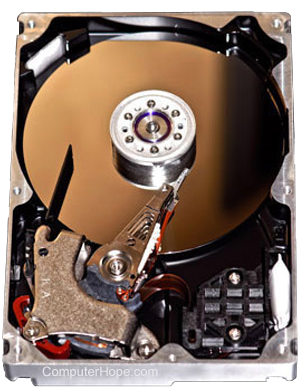Permanent storage

Permanent storage, also called persistent storage, is any computer data storage device that retains its data when it's unpowered. A common example of permanent storage is the computer's hard drive or SSD.
Examples of permanent storage devices
- Blu-Ray disc
- CD-ROM (compact disc read-only memory) disc
- CD-R (compact disc recordable) and CD-RW (compact disc re-writable) disc
- DVD-R (digital versatile disc recordable), DVD+R, DVD-RW (digital versatile disc read/write), and DVD+RW disc.
- Floppy diskette
- Hard drive
- Jump drive or flash drive
- Memory card
- Memory stick
- SSD (solid-state drive)
Non-permanent storage
Compared to permanent storage, non-permanent storage, also called volatile memory, is a storage device whose data is lost when its power source is disconnected. Examples of non-permanent storage include CPU (central processing unit) cache and RAM (random-access memory).
How they work together
Permanent and non-permanent storage devices have advantages and disadvantages that complement each other. They work well in conjunction because each does something well that the other does not.
Non-permanent storage operates faster than persistent storage (its data is accessed at a lower latency). However, it is more expensive to manufacture. Therefore, it is manufactured in smaller capacities, and the computer uses it as a scarce resource for the most time-critical applications.
Permanent storage operates more slowly than non-permanent storage but is cheaper to manufacture. Its primary use is long-term data storage for your operating system, applications, and documents. When you use a specific application, that data is loaded into RAM (non-permanent storage), which operates quicker.
Generally, the slower storage is, the larger its capacity. For instance, a computer may have a 2 TB hard drive and a 256 GB SSD for permanent storage. The same computer may use 16 GB of RAM and 9 MB of CPU cache as volatile storage. The slowest, cheapest storage (the hard drive) has the largest capacity, and the fastest, most expensive storage (CPU cache) is the smallest.
